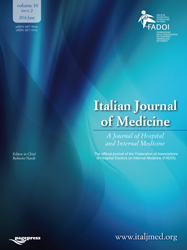Acquired hemophilia A in a case of purple urine bag syndrome
All claims expressed in this article are solely those of the authors and do not necessarily represent those of their affiliated organizations, or those of the publisher, the editors and the reviewers. Any product that may be evaluated in this article or claim that may be made by its manufacturer is not guaranteed or endorsed by the publisher.
Authors
The rare hemorrhagic disorder known as acquired hemophilia A (AHA) is brought on by the spontaneous development of autoantibodies against coagulation factor VIII (FVIII). It may be secondary to autoimmune diseases or cancers, or it may be idiopathic. Less than 10% of cases may have an infection as a secondary cause. We present the case of a 90-year-old anemic woman who was admitted to the hospital. She contracted a urinary tract infection (UTI) while in the hospital, and her urine took on a distinct purple hue. She had poor hemorrhagic manifestations and a prolonged partial thromboplastin time. After ruling out autoimmune and neoplastic causes, we diagnosed AHA as a result of a UTI caused by Enterococcus faecalis.
How to Cite

This work is licensed under a Creative Commons Attribution-NonCommercial 4.0 International License.
PAGEPress has chosen to apply the Creative Commons Attribution NonCommercial 4.0 International License (CC BY-NC 4.0) to all manuscripts to be published.






